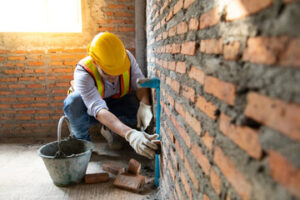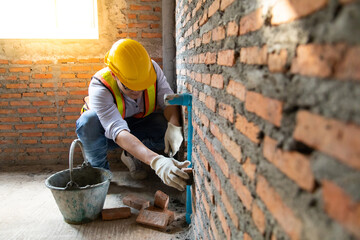Masonry is the art of building structures with individual units laid in mortar. It is a versatile technique that combines elements from different construction techniques. Some examples of masonry work include building houses and bridges. Often, the finished product is a structure with a symbol or message. But despite its beauty, not all masonry is created equal.
Masonry construction is a great way to save money on energy bills. Building a house with stone and bricks is much more energy efficient than constructing a house from wood. In addition, stone walls are quieter and require less heating than wooden ones. As an added benefit, masonry construction can be done on constrained sites. Unlike concrete, masonry materials are readily available off the shelf, which makes them less costly and less time-consuming to build. To learn more, visit https://masonrycharleston.com/.
A masonry unit can consist of rough or dressed stone blocks. Generally, dressed stones are used for cornerstones and door and window jambs. Rubble masonry, on the other hand, uses irregularly shaped stone blocks. Rubble stone masonry is often uncoursed, but it can be used to construct reinforced concrete walls. It is also widely used as a decorative surface on concrete buildings.
Masonry walls are not suitable for earthquake-prone areas, as they depend on their own weight. During earthquakes, they are not stable and are often prone to collapse. In this case, dry-set masonry is a better choice because it provides more drained support for the log bridge. This will increase its service life.
Before completing brick masonry construction, the bricks must undergo Compressive Strength Tests (CSTs) to ensure their strength. The strength should be at least 35 kg/cm2.
The main materials used for masonry are the clay, stone, and cement. These materials are used for both inside and outside facing walls. A wall made from well-cut stone can be built without mortar. The Romans, however, recognized the importance of cement and produced cement from pozzolanic tuff, a type of volcanic ash. Cement is a solid mixture of lime and water that binds together pieces of stone. It then expands to form hard concrete that can be used for construction. A concrete wall is faster to construct than a stone block wall.
Mortars used in masonry construction contain Portland cement. They are available in several forms, depending on the type of masonry needed. Type N mortar is typically used on exterior and above-grade walls. It is recommended for use in areas of high heat and extreme weather conditions. Concrete blocks are commonly used for foundation walls but are also used for exterior and landscape walls.
As building codes change, masonry walls are becoming increasingly complex. New energy codes call for different combinations of components and are more reliant on a wider range of materials. As a result, choosing the right materials can be a difficult task for architects and builders. In this article, we will outline some of the main types of masonry materials and discuss how they can complement each other.
Bricks and cinder blocks are two of the most common masonry materials. While red brick is the most common color for masonry, bricks come in many shades and textures, and there are even some designed to mimic higher-quality materials, like stone or wood. Bricks can be laid in various patterns and combinations, and mortar is used in between them. This allows for a higher degree of durability and resistance to damage.
The principles of masonry teach men righteousness and morality. They promote a spirit of brotherhood and unity among men. It encourages self-respect and self-help qualities, and it safeguards against the infringement of others’ rights. Masonry encourages morality, but it is not a religion.
Masonry is an institution for all men, no matter their race, creed, or religion. It seeks to serve humanity and to make sure each member lives out its principles in daily life. It is only when every Mason understands that he must live out these principles in his actual life that masonry will fully fulfill its purpose.
Freemasonry promotes a sense of brotherhood and encourages its members to learn and develop their knowledge of the world. Members are expected to practice charity and good citizenship and to be honest with their fellow members. Members are also encouraged to volunteer and raise money for various causes. They also give to local communities and charities.
